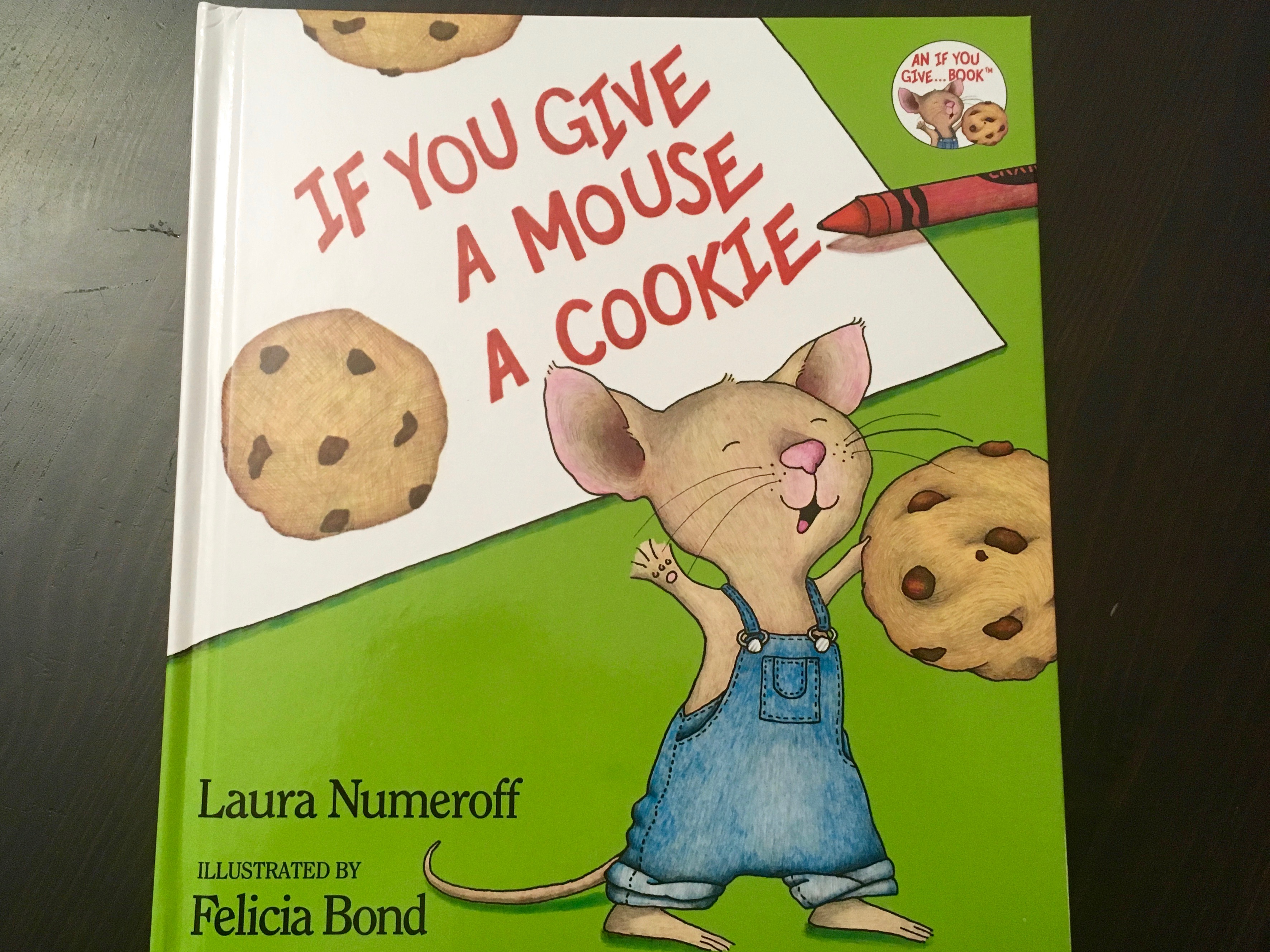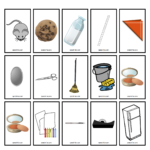Updated on September 21, 2018
Speech Kids Calgary
a multi-sensory approach to speech, language, social communication, and literacy

If You Give a Mouse a Cookie by Laura Numeroff is such a fun book and it so easily lends itself so well to building speech, language, and early literacy skills. While the story and illustrations are a lot of fun, what I like best about If You Give a Mouse a Cookie is how easily I can change the focus for each child based on their age/developmental level as well as the skills needing to be targeted. Kids love when we add manipulatives so they can take part in telling or retelling the story.
Speech Activities:
If You Give a Mouse a Cookie can be used to target speech sounds in especially at the word level, phrase level, and in conversation.
- Use the word chart for words to practice based on sound.
- If You Give a Mouse a Cookie game board:
- /k/ – cookie, milk
- /m/ – milk
- Story round:
- Start with an “If you give a _____” sentence (e.g., If you give a fish a worm, then he will want a toothbrush.) and then take turns building on it (e.g., “If you give a fish a toothbrush, then he will want some toothpaste.”).
- **this can easily target final /f/ (if) or initial /g/ (give). You could add an alternative target sound by choosing a specific character (e.g., fish, dog, cat, rabbit, boy, girl, gorilla, etc.).
- Retelling the story:
- For kids working on generalizing their sounds, have them retell the story using story props (additional printable story props for this story are available at kizclub.com) while thinking about their target sound.
Language Activities:
Vocabulary
- Concepts –
- the story uses the following sequencing concepts: if, then, and when
- use the story props to retell the story, and focus on using sequencing concepts (first, then, next, when, after, last, etc.)
- Comparing and contrasting – figure out how the items the mouse wants go together
Grammar
- Plurals – use this If You Give a Mouse a Cookie game board to collect 1 cookie, 2 cookies, or 3 cookies. (Here are the directions.)
- Pronouns – this story uses “he” (mouse in the story is a male) and “you” frequently.
- Prepositions – this story uses “in” and “on”. Play Simon Says with the story props to incorporate prepositions (see following directions section below).
- Verbs – lots of repetition of third person singular verbs, modal verbs (might)
Following Directions
- Play Simon Says using the story props (Simon Says put the mouse under the table. Simon Says put the broom behind the door.)
- Use the game board (here are the directions) to practice if…then directions
Early Literacy Activities:
- Inferencing – lots of opportunity to ask thought questions. What do you think might happen if he gives him the cookie? Why do you think he wanted the napkin? What would you do if…? I wonder why the boy looks so tired.
- Story telling –
- Use the story props to help tell and retell the story.
- Try creating your own version of this story together – do a story round where everyone gets a turn to add an idea.
Printables:
Word chart
Game board and Directions
Story props
Where to buy:







